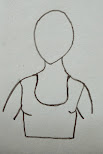Buttons are tiny and usually disc shaped structures used as a fastener or for decoration in clothing. It can be made of any material such as plastic, metal, wood, shell, resin etc.
There are basically two types of buttons, they are sew-through and shank button.
Shank buttons have a solid top layer and a shank beneath it to attach to the fabric.
Sew-through buttons have holes in them either two or four through which the button is sewn into fabric.
Jeans buttons also called as rivets have two separate parts a pin position and a button top which are not sewn into the fabric but are positioned and then hammered together. A buttonhole for it is then created by hand or machine.
Self-covered buttons are covered with the fabric usually the same fabric as that of the main body of the garment.









